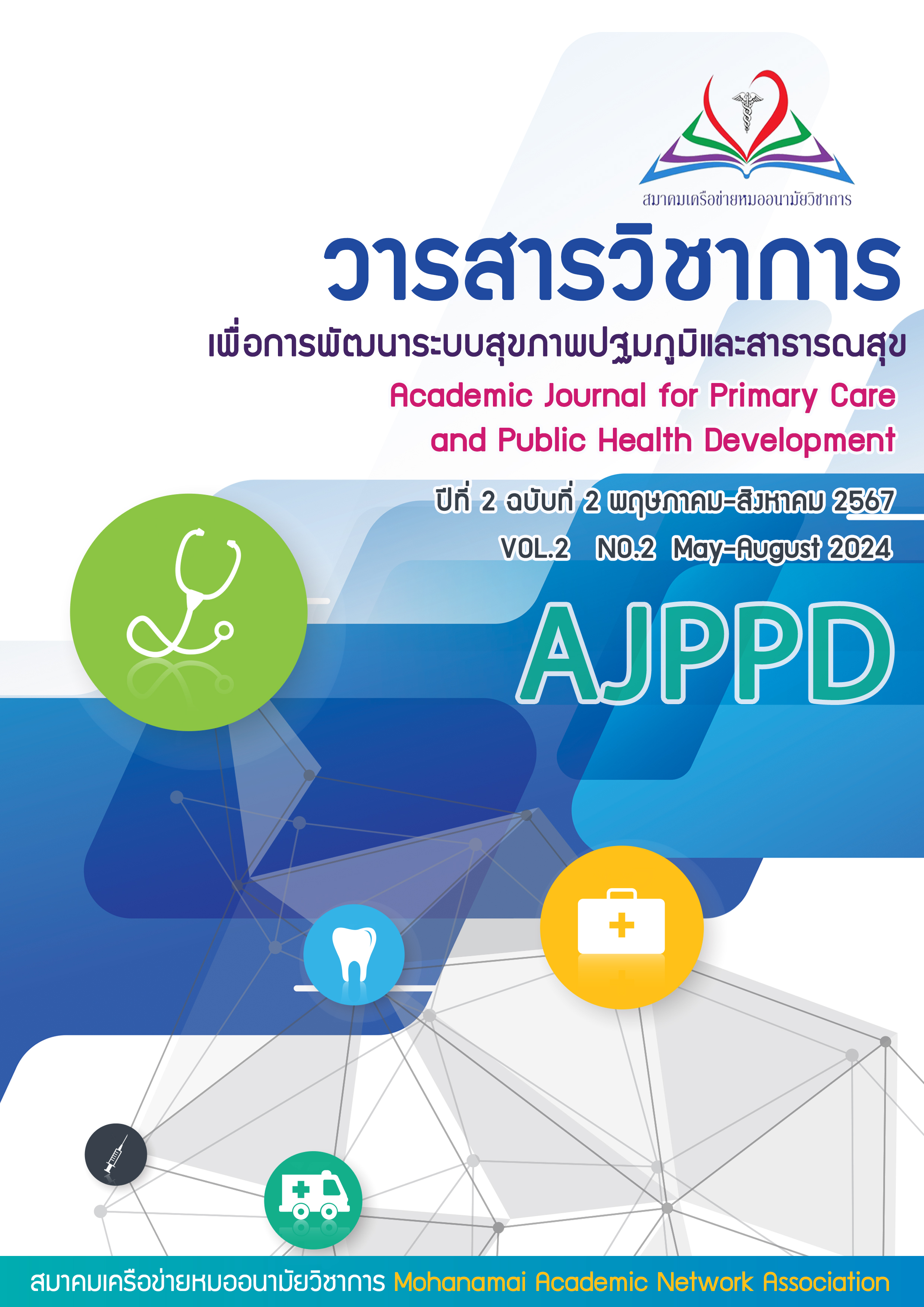The Effects of the IDEAL Model-Based Care and Discharge Planning Program on Knowledge, Glycated Hemoglobin Levels, Discharge Readiness, and Readmission Rates in Diabetic Patients
Keywords:
IDEAL Model program, Diabetic patients, Discharge planningAbstract
This research aimed to investigate the effects of the IDEAL Model-based care and discharge planning program on diabetes knowledge, glycated hemoglobin levels, discharge readiness, and readmission rates in diabetic patients. The study employed a quasi-experimental, one-group pretest-posttest design. The sample consisted of 16 diabetic patients who had been readmitted within 28 days at Ban Khok Hospital, Uttaradit Province. The research instruments included the IDEAL Model program, a diabetes knowledge questionnaire, a discharge readiness assessment form, and a readmission record form. Data were analyzed using descriptive statistics and inferential statistics, including the Wilcoxon Signed-Rank Test and Fisher's Exact Test.
The results showed that after the program implementation, patients' diabetes knowledge increased significantly (Z = -3.516, p < 0.001), glycated hemoglobin (HbA1C) levels decreased significantly (Z = -3.536, p < 0.001), discharge readiness improved significantly (Z = -3.527, p < 0.001), and readmission rates decreased significantly (Fisher's Exact Test, p < 0.05). In conclusion, the IDEAL Model-based care and discharge planning program effectively improved knowledge, reduced glycated hemoglobin levels, enhanced discharge readiness, and decreased readmission rates in diabetic patients.
References
กองยุทธศาสตร์และแผนงาน สำนักงานปลัดกระทรวงสาธารณสุข.(2560). Happy MOPH. สืบค้น เมื่อ 5 ตุลาคม 2566, จาก https://happy.moph.go.th
โรงพยาบาลบ้านโคก (2564). สถิติการเข้ารับการรักษาในโรงพยาบาลโคก. อุตรดิตถ์, มปป.
สมาคมโรคเบาหวานแห่งประเทศไทย ในพระราชูปถัมภ์สมเด็จพระเทพรัตนราชสุดาฯ สยามบรมราชกุมารี. (2560). แนวทางเวชปฏิบัติสำหรับโรคเบาหวาน 2560. กรุงเทพฯ: สำนักพิมพ์หมอชาวบ้าน.
Anderson, R. M., Funnell, M. M., Butler, P. M., Arnold, M. S., Fitzgerald, J. T., & Feste, C. (2003). Patient empowerment: Results of a randomized controlled trial. Diabetes Care, 26(5), 1647-1652. https://doi.org/10.2337/diacare.26.5.1647
Bloom, B. S., Hastings, J. T., & Madaus, G. F. (1971). Handbook on formative and summative evaluation of student learning. New York: McGraw-Hill.
Deakin, T. A., McShane, C. E., Cade, J. E., & Williams, R. D. (2005). Group based training for self-management strategies in people with type 2 diabetes mellitus. Cochrane Database of Systematic Reviews, 2005(2). https://doi.org/10.1002/14651858.CD003417.pub2
Halasyamani, L., Kripalani, S., Coleman, E., Schnipper, J., van Walraven, C., Nagamine, J., ... & Manning, D. (2006). Transition of care for hospitalized elderly patients—Development of a discharge checklist for hospitalists. Journal of Hospital Medicine, 1(6), 354-360. https://doi.org/10.1002/jhm.129
Jack, B. W., Chetty, V. K., Anthony, D., Greenwald, J. L., Sanchez, G. M., Johnson, A. E., ... & Culpepper, L. (2009). A reengineered hospital discharge program to decrease rehospitalization: a randomized trial. Annals of Internal Medicine, 150(3), 178-187. https://doi.org/10.7326/0003-4819-150-3-200902030-00007
Shepperd, S., McClean, J., Phillips, C. O., & et al. (2010). Discharge planning from hospital to home. Cochrane Database of Systematic Reviews, 2010(1), CD000313.
World Health Organization. (2022). Diabetes. Available from https://www.who.int/news- room/fact-sheets/detail/diabetes

Downloads
Published
How to Cite
Issue
Section
License

This work is licensed under a Creative Commons Attribution-NonCommercial-NoDerivatives 4.0 International License.




